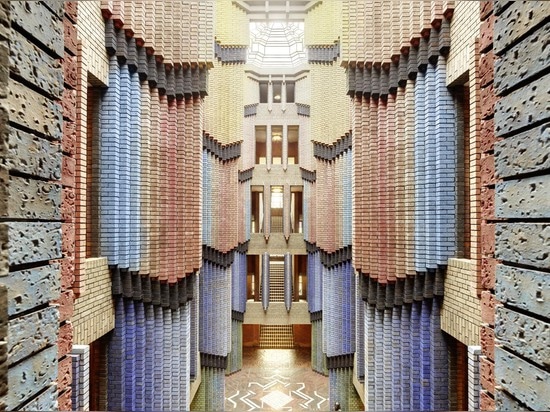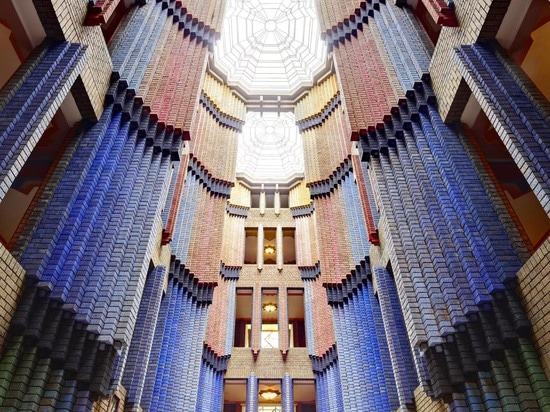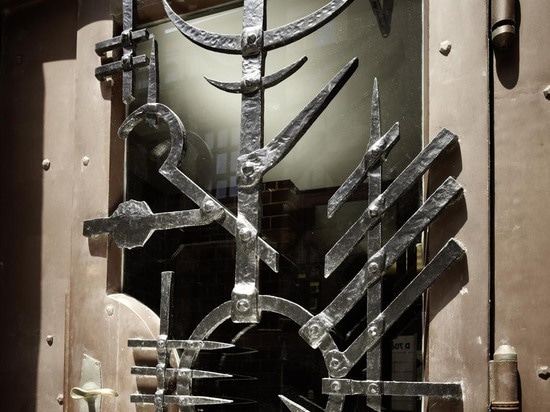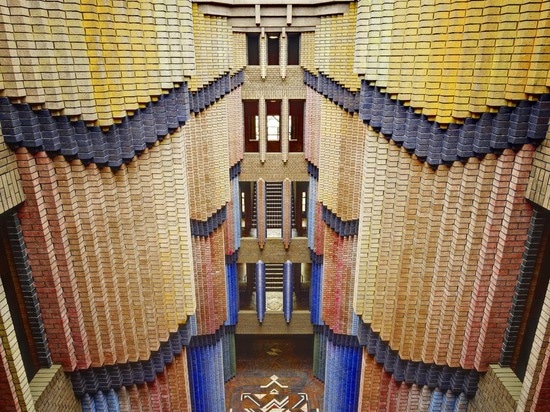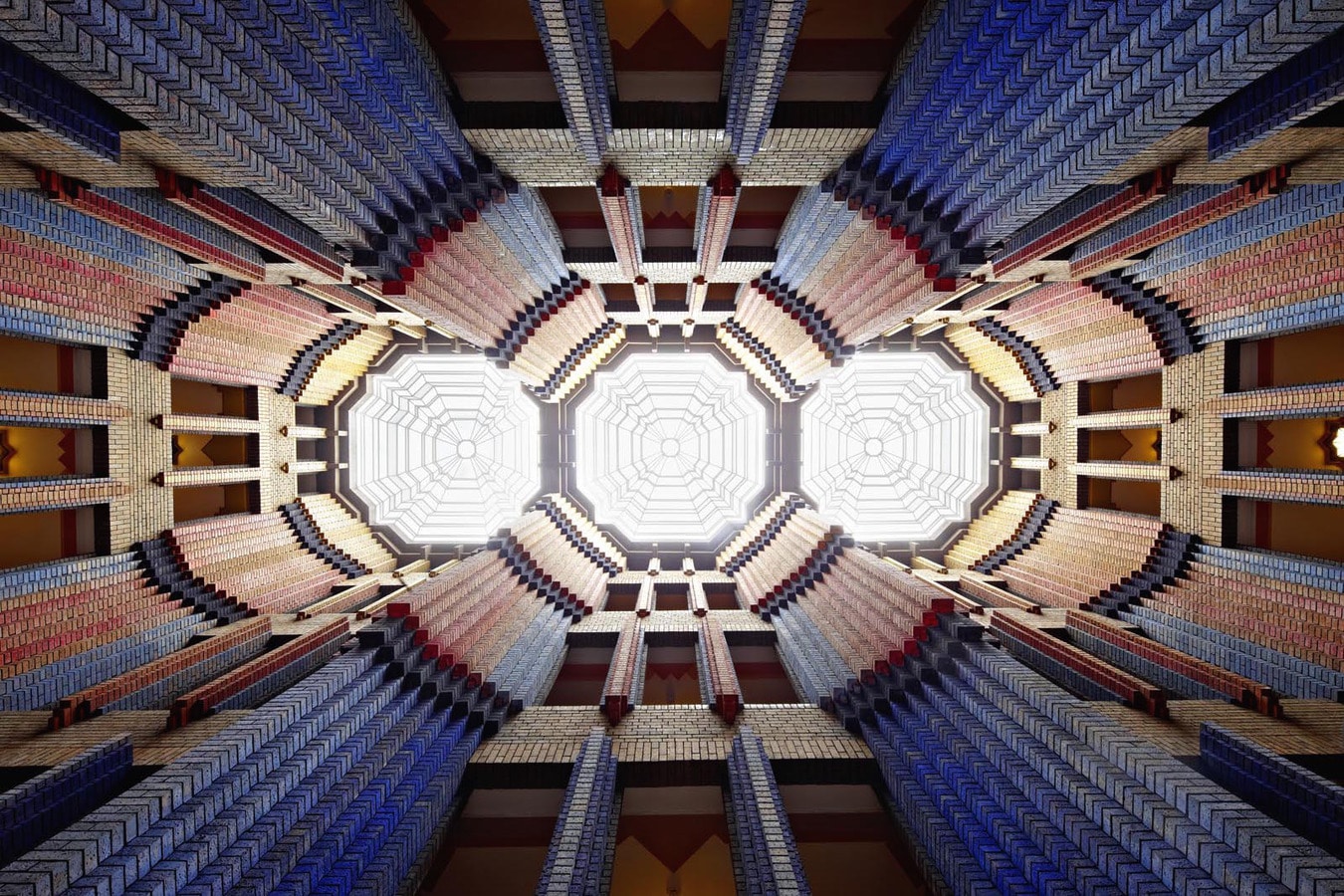
#COMMERCIAL ARCHITECTURE PROJECTS
BEHRENS, BRICKS AND COPYRIGHTS
INTERVIEW WITH PHOTOGRAPHER KP HOPPE
KP Hoppe, who shot and allowed us to use the amazing cover image of Peter Behrens’ 1924 Hoechst building in Frankfurt for our current Bricks issue, has worked as a photographer in the city since 1989. uncube’s Sara Faezypour spoke to him about capturing the moment and the pressing issues of copyright regulations now threatening the livelihoods of many of his profession across Europe.
Let’s start at the beginning: could you tell us a little bit about your background? How did you become interested in photography?
My desire to be a photographer struck me like a thunderbolt when at the age of 14, when I held my own photos in my hands for the first time and realised that the feeling one gets at the moment of pressing the shutter is one that can be preserved.
As a professional photographer you’re familiar with different subjects. Architecture is known to be a reliable subject due to its static nature. How different is it taking photos of buildings from, say, shooting portraits?
At first glance, these two types of subjects would seem to be very different, but if you look closer, there are a great number of similarities. Photography is about fixing the moment. With portraits these are often very brief moments in which something reveals itself that I am then able to convert into timelessness with the camera. This sometimes applies to architecture photography too – under certain lighting conditions. But more often it is just the opposite: the appearance of a building changes with the path of the sun and that can take time, as everyone knows. Then it is a matter of waiting for a moment that might take hours to happen.
Both situations affect the way I shoot pictures, but to be honest I don’t know in the end whether my goal is to capture the essence of the person, thing, or building I am photographing or whether the impression that I am capturing is merely a mirror of my own position and projections.
Can you tell us what drew you particularly towards photographing the Hoechst AG Technical Administration building pictured here and on the cover of our latest issue?
I was delighted to get the commission for this job and found it both an honour and a challenge to be the one chosen to shoot these images of a building that had, for such a long time, so rarely been seen by the public.
You are familiar with photography regulations within Europe when it comes to public spaces, buildings and ownership rights. Can you explain these regulations and how it affects your work as a photographer?
It is a complex topic and I myself am torn between wanting to protect my work and allowing it to be shared by others. It is no different for architects and designers. At the moment in Germany there is the law of so-called “Panoramafreiheit” (panorama freedom). This means that all images taken from public space without the use of tools like ladders are allowed and can be exploited. Be careful however, even taking photos from the first floor of a neighbouring building for example, is no longer covered by this rule. The whole topic is very much under discussion at the moment since the panorama freedom rule is now at risk as part of the harmonising of EU regulations. [And could potentially have far-reaching consequences: see the current Wikipedia campaign, eds.]
Nevertheless, we do have to ask ourselves how cultural development can take place without reference to what has gone before; when images of everything man-made becomes impeded from further use or this use is transformed by copyright regulations. The first effects are already visible: street photographs like those of Henri Cartier-Bresson taken between 1930 and 1950 are now practically impossible under the current terms defining privacy rights. Yet everyone posts images on their social networks and thereby transfers extensive rights to these directly to the US corporations that run them.
I believe we have to completely rethink the whole of copyright law in such a way that it does not inhibit progress, yet still allows the copyright holder to earn a living from his or her work. Copyrights should serve the creators – not industry.
So if the new proposal by the European Parliament to restrict panorama freedom goes through how do you think this will change architecture photography as we know it?
It will enormously restrict the work of creative people earning a living from film and photography and threaten their livelihoods.
